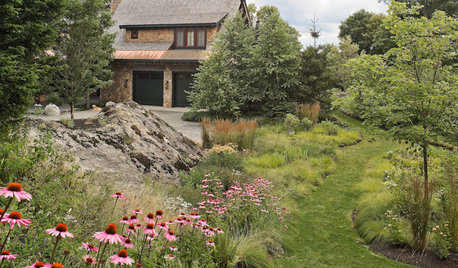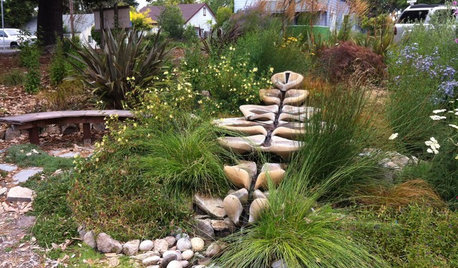Slime algae growing in plant tank
atown
14 years ago
Related Stories

EARTH DAYGrow a Beautiful Garden With Ecofriendly Greywater
Reducing home water waste means lower bills and a healthier planet. Here's how to set up a greywater home irrigation system that can help
Full Story
GARDENING GUIDES15 Ideas to Try in Your Garden This Year
These gardening stories were tops among Houzz readers. Which ideas might you try this year?
Full Story
LANDSCAPE DESIGNEasy Ways to Manage Stormwater for Lower Bills and a Healthier Earth
Send cleaner runoff into local waterways and spend less on yard irrigation with these simple landscaping approaches
Full Story
GARDENING GUIDES13 Risks to Take for True Garden Rewards
Go ahead, be a rebel. Breaking rules in the garden can lead to more happiness, creativity and connection with the earth
Full Story
LANDSCAPE DESIGNNatural Swimming Pools: More Beauty, No Chemicals
Keep your skin and the environment healthy with a pool that cleans itself, naturally
Full Story
SAVING WATER6 Reasons Why You Should Save Your Rainwater Now
Collect and store during the rainy season so you’ll have water ready for irrigation when you need it
Full Story
EVENTSOn Show: Weird, Wondrous Science Meets Design
Houses grown, not built. Power-generating soil. And snail poop that ... well, see for yourself in our coverage of a new Rotterdam exhibit
Full Story
LANDSCAPE DESIGNNew Ways to Design With Water
Go beyond 3-tiered fountains and faux waterfalls to discover water's architectural possibilities
Full Story
GREEN BUILDINGGoing Solar at Home: Solar Panel Basics
Save money on electricity and reduce your carbon footprint by installing photovoltaic panels. This guide will help you get started
Full Story
PETSPet-Proofing Your Home: A Room-by-Room Guide
Not all pet dangers are obvious. Keep furry friends safe and sound by handling all of these potential hazards
Full Story





jeff_al
ianna
Related Professionals
Brentwood Landscape Architects & Landscape Designers · Peabody Landscape Contractors · Hilton Head Island Landscape Contractors · Whitehall Landscape Contractors · Tyngsboro Landscape Contractors · Boone Decks, Patios & Outdoor Enclosures · Chandler Decks, Patios & Outdoor Enclosures · Chicago Decks, Patios & Outdoor Enclosures · Clemmons Decks, Patios & Outdoor Enclosures · Clute Decks, Patios & Outdoor Enclosures · Greendale Decks, Patios & Outdoor Enclosures · Provo Decks, Patios & Outdoor Enclosures · Randolph Decks, Patios & Outdoor Enclosures · Reisterstown Decks, Patios & Outdoor Enclosures · South Miami Heights Decks, Patios & Outdoor Enclosuressherryazure
sherryazure
Tony Saunders
ianna